RINASCENTE IS ALL ABOUT WOMEN!

1 — Pegge Hopper, L’importanza della donna, 1962 ca.
The department store's role as a workshop and showcase for women's talent and skills
Since Italy’s earliest years as a unified country, the Rinascente store chain has provided a special backdrop for the cultural and social development of Italian women, creating a new image of woman that was even smarter and more emancipated.
This evolution is revealed through the Rinascente Archives, the retailer’s digital archives, beginning with the sensual silhouette forms designed by Marcello Dudovich and working up to the Rinascente shop assistants suited up with Biki-designed uniforms, confident in the knowledge of being representatives of a new modern fashion that is affordable to all.
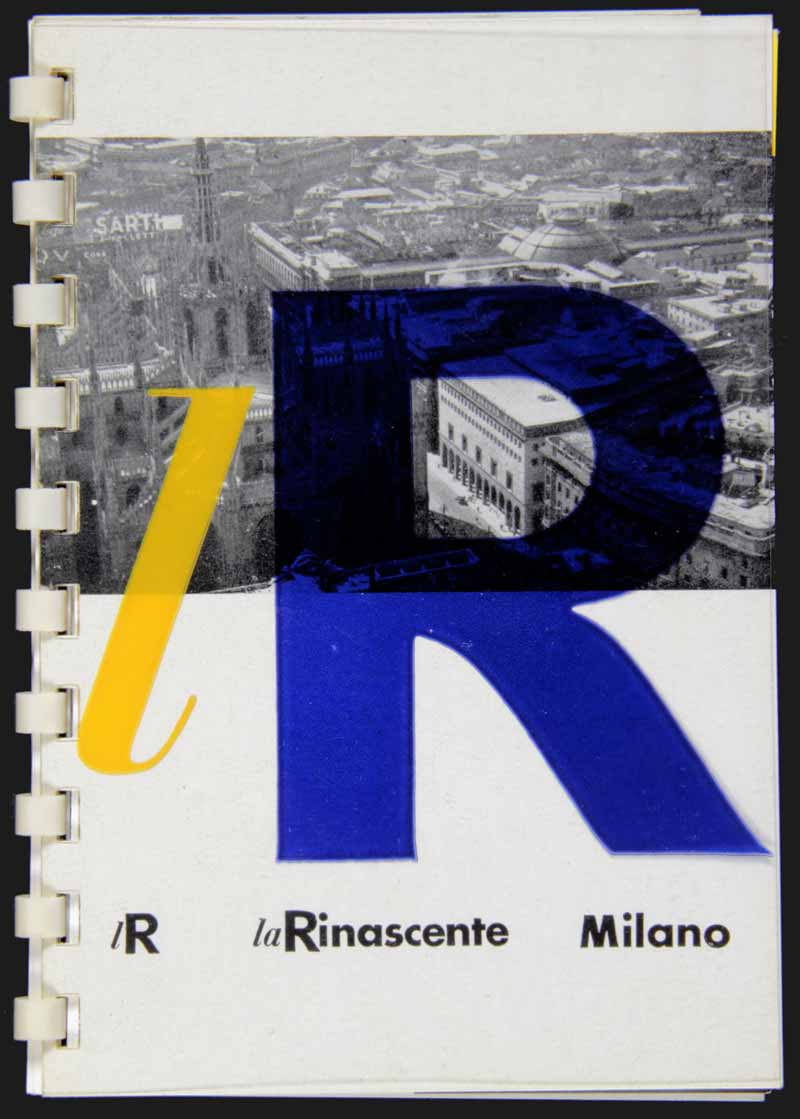
2 — Amneris Latis (art director), Brochure, 1952

3 — Amneris Latis (art director), L’estetica del prodotto lR, Pieghevole, 1953
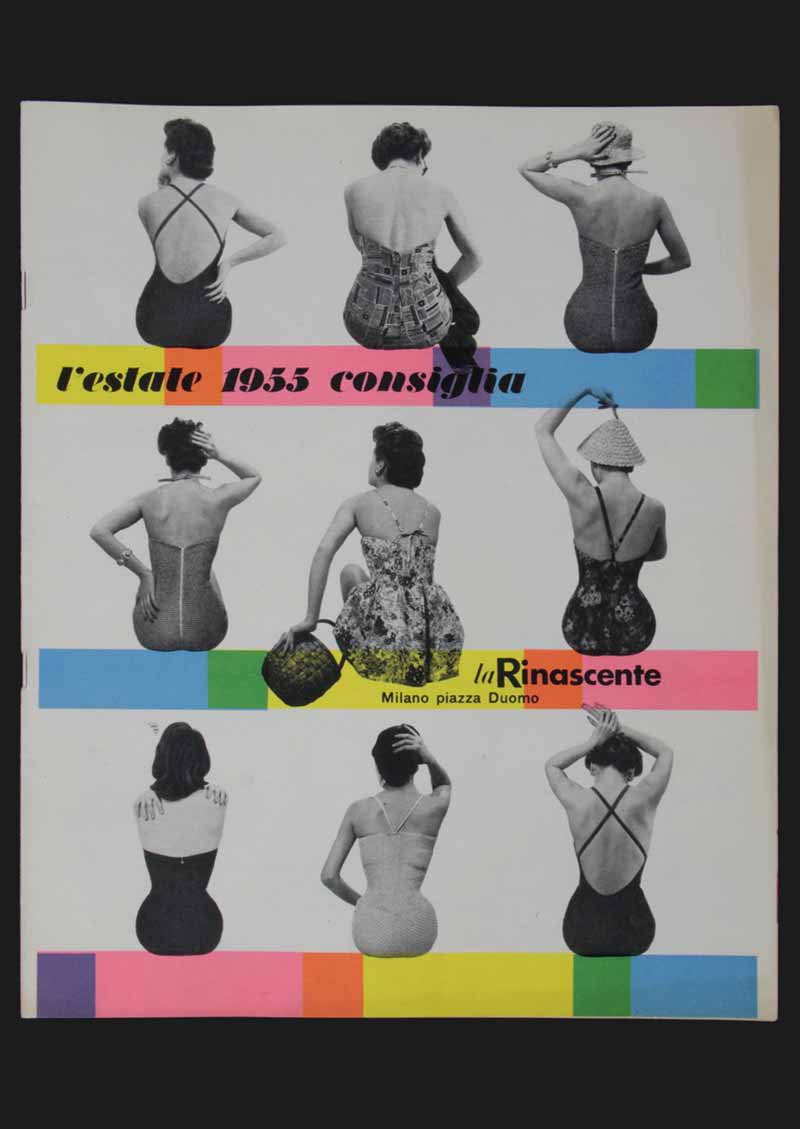
4 — Amneris Latis (art director), Catalogo, 1955
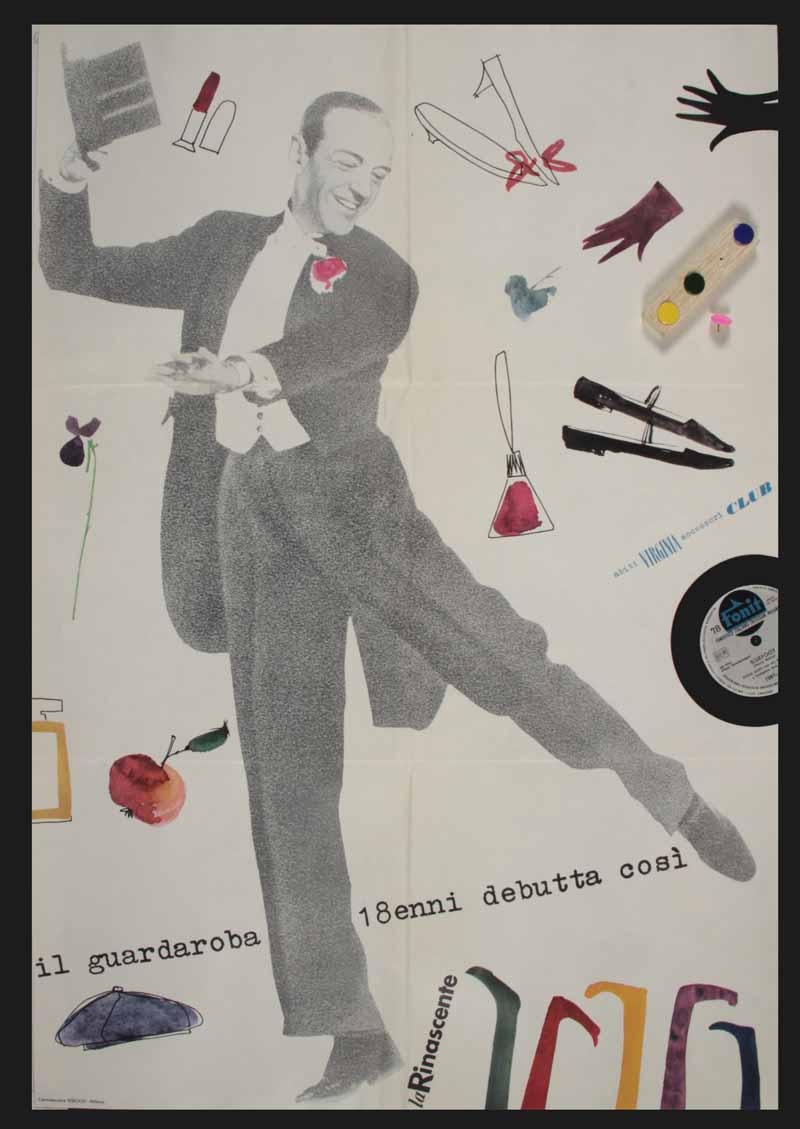
5 — Amneris Latis (art director), Il guardaroba 18enni debutta così, Invito, 1956
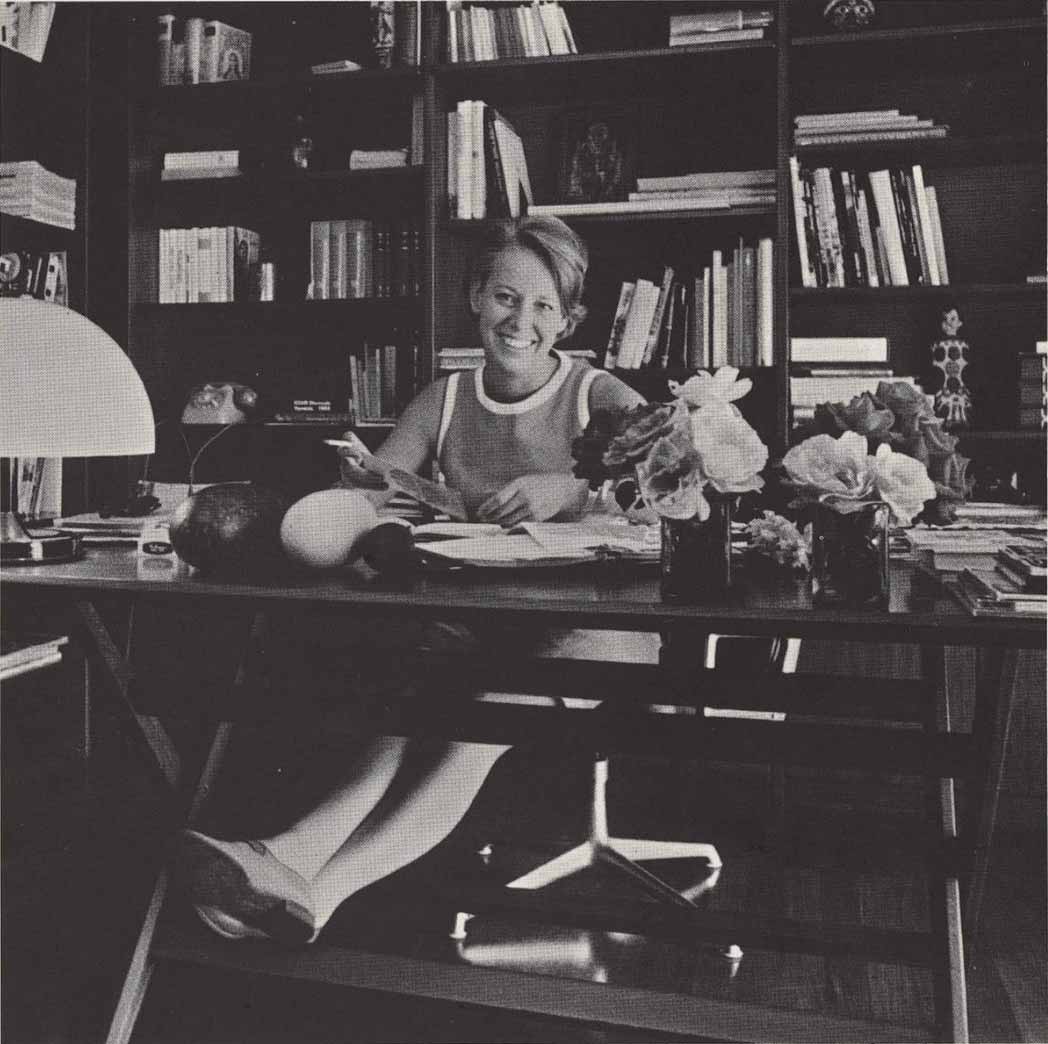
6 — Amneris Latis (art director), Ritratto, 1968
In 1961, for the centenary celebrations of the Unification of Italy, Irene Brin published an article on the role of large department stores in the process of unification, in the house organ “Cronache della Rinascente-Upim”, (Chronicles of Rinascente-Upim), stating that: “Italy is made, agreed its founding fathers in around 1861, now we must make Italians (meaning Italian men in particular).
And Italian women, where did they come in? These Italian women, individualist and mysterious, each linked to her own personal tradition and habits, good or bad as they may be.” Italian women (and their families) were “united” in a common identity with shared consumer preferences in terms of taste and style in the department stores (especially the most important one - opened in Milan in 1865 by the Bocconi brothers and revived in 1917 under the guidance of Borletti-Brustio with its new name as bestowed by D’Annunzio).
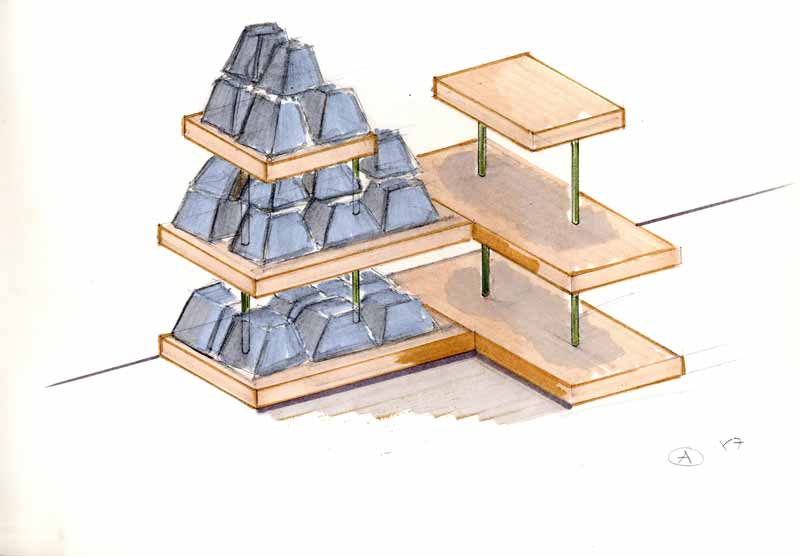

7 / 8 — Piercarla Lanzani, Vetrine natalizie, 1985 ca.
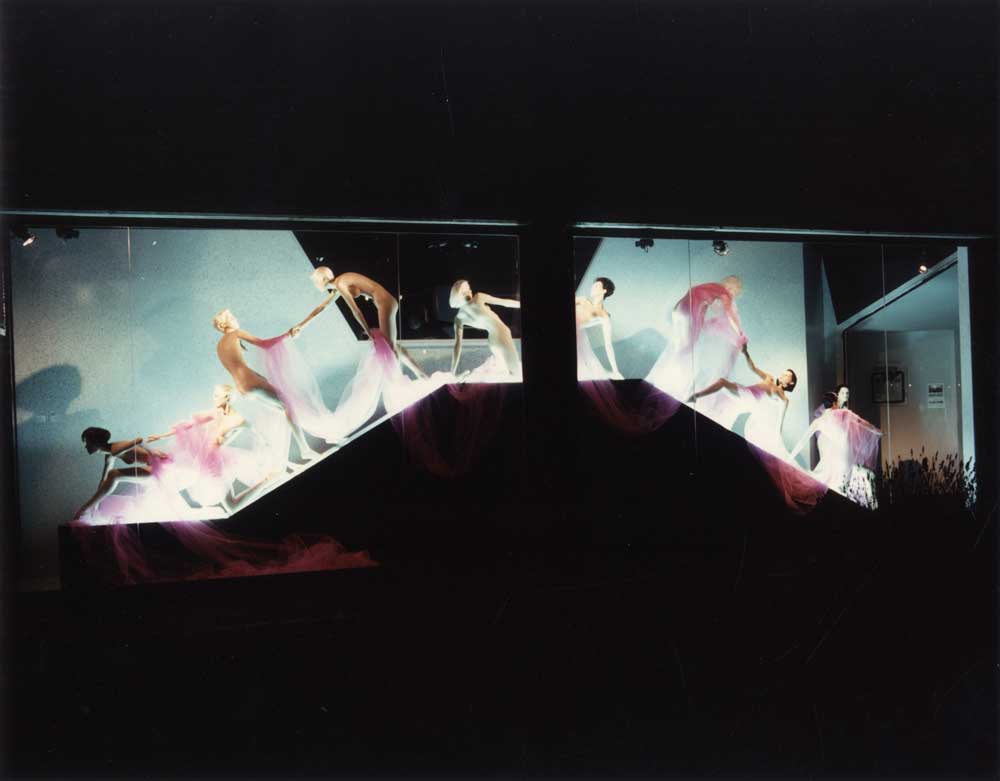
9 — Piercarla Lanzani, Vetrina, 1985 ca.
Irene Brin continued: “The department stores (and Rinascente still today holds the top place in terms of initiative, exclusivity and excellence in this field) initiated a process of unification and social merging, which would later be rounded off with the help of radio and TV. Young girls and ladies arrived in the city from small towns and villages by bike, ready to buy modern and cheerful printed fabric, or tartan skirts and twin-sets in angora wool. The range on offer was large enough for girls from every region to find a wide variety of flower-print fabric, different tartan prints and lots of colours, allowing them all to enjoy the same opportunity to dress with style and elegance.
At this point, the department stores were able to advance further still. Rebuilding from their own ruins, in new and modern premises, they established huge communication networks between Italy and the rest of the world. With utmost simplicity, they offered Italian women (already united by a love of Modugno, tubes of mayonnaise and tinned tomatoes) Swedish furniture, Indian chairs, Japanese lamps, Parisian fashion and American delicacies”.
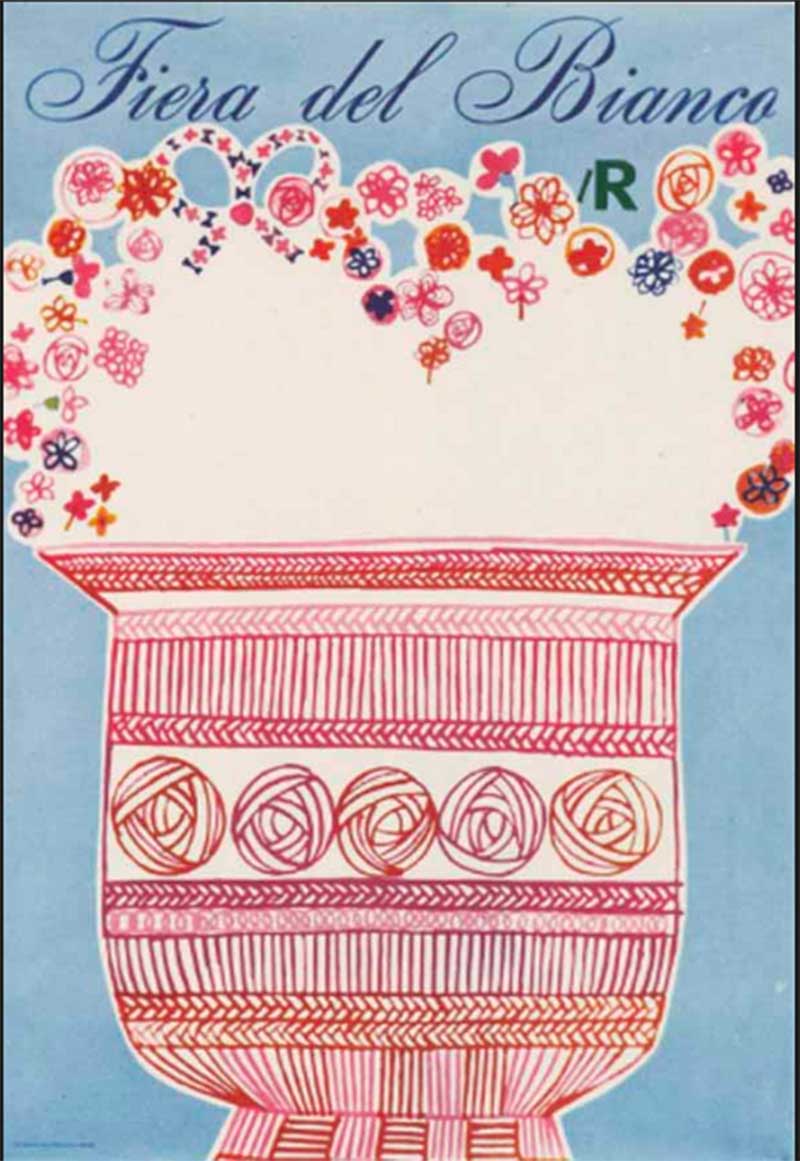
10 — Aoi e Max Huber, Fiera del Bianco, Manifesto, 1964
Since its founding, Rinascente has represented a workshop where novelty and innovation from all over Europe is tried and experimented. The innovative sales model, based on early French experiences with goods displayed on shelves at a fixed price, was not only the turning point towards a modern economy but also an engine of strong changes in daily life in the developing consumer society - new icons and archetypes of taste, revolutionising the image of women and stimulating the birth of production systems, particularly in the fields of fashion and design, laying the foundations for authentic Italian style.

11 — Adriana Botti Monti (art director), Bambini, Catalogo, 1967
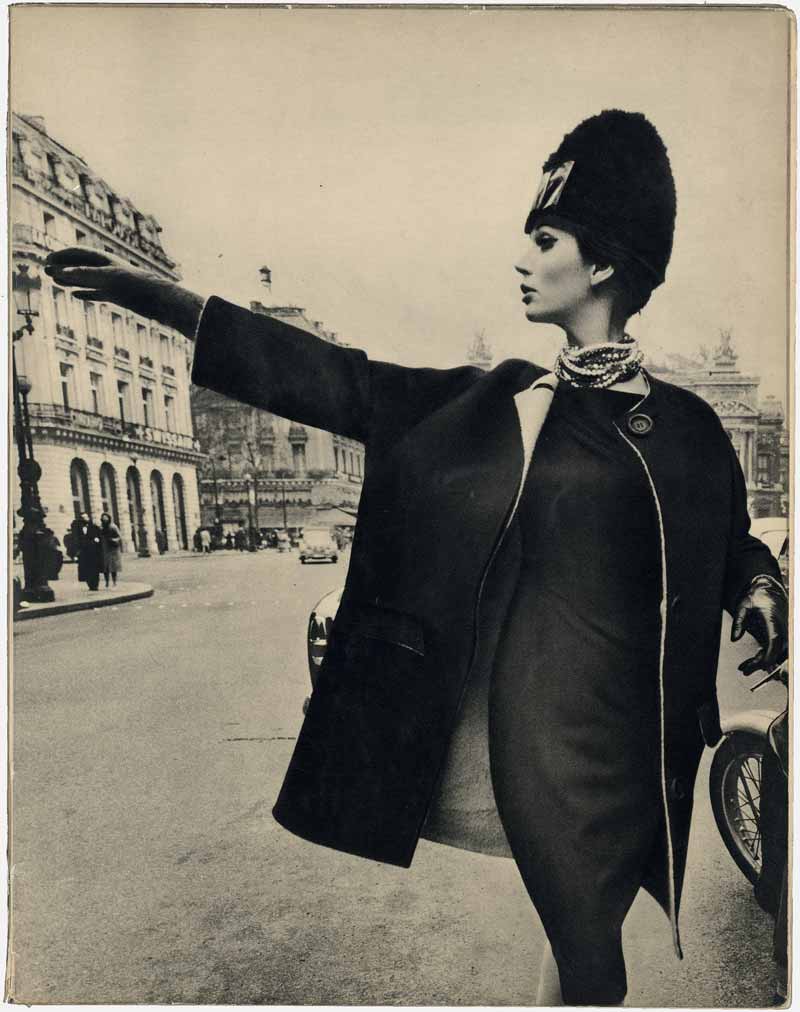
12 — Adriana Botti Monti (art director), Incontri in Europa, Catalogo, 1961

13 — Adriana Botti Monti (art director), Ritratto, 1968
“Aristocratic, popular, anarchic, educational or reflecting customs, fashion always survives: it triumphantly survived two world wars. And in the last war, when there were no raw materials available - no more silk, wool, thread - it turned to cork, pool table baize, ribbons and old curtains. It turned to these items without being humbled in any way - instead flaunting itself with elegance, pride, lavishness, marching along cobblestone streets in a seeming act of self-applause. It was in that moment that the industry showed how it’s not elite luxury which makes fashion, but simply good taste, which can pertain to all”.
So wrote Maria Pezzi in the house organ “Cronache della Rinascente-Upim” in 1968, highlighting the fundamental contribution of the Milan department store to remoulding the image of women, the democratisation of fashion and the creation of an Italian textile and clothing market which obeyed the aesthetic rules of haute couture, establishing a certain good taste in the emerging classes alongside the modernisation of commercial channels and techniques in the clothing and accessory industry, and the opening of various retail stores in the largest Italian cities.

14 — Adriana Botti Monti (art director), Viaggio di moda, Catalogo, 1968
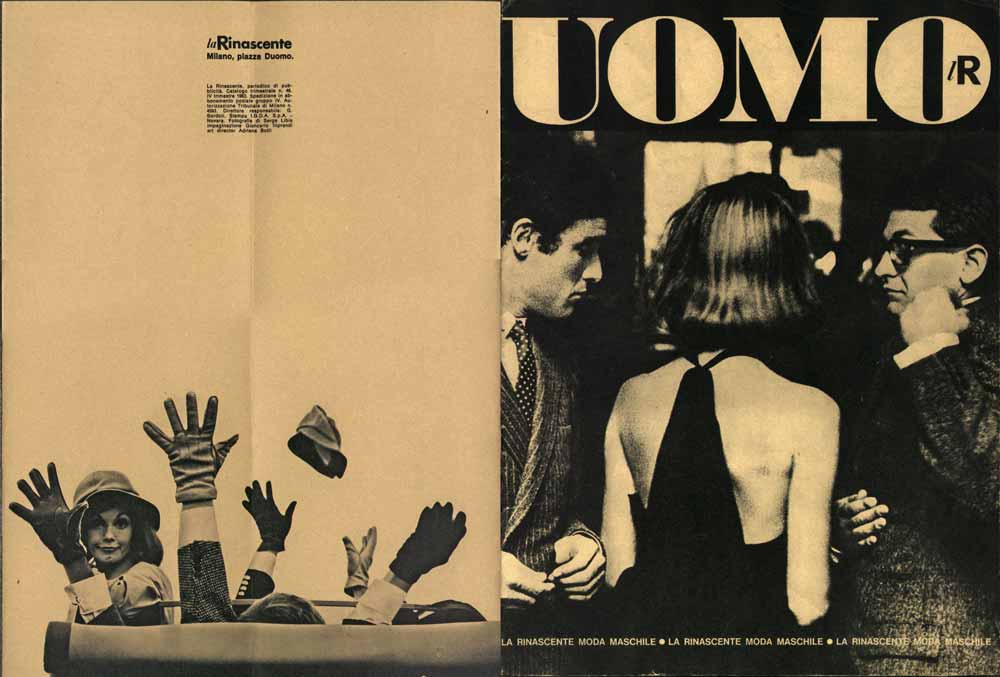
15 — Adriana Botti Monti (art director), Moda uomo, Catalogo, 1963
Just a few years after the first success of the Sala Bianca in Palazzo Pitti, birthplace to Italian fashion, the Rinascente fashion shows had become trendsetting appointments; “hundreds of ladies are crowding onto the easy chairs and sofas of the Rinascente Tea Room, cleverly fighting for their places. Girls with pageboy cuts, ladies with short styles, all ready to receive the latest fashion news from Elle Erre, announced by young dancers from the Scala Theatre who dance up and down the catwalk to hand out violets to the ladies” (“Cronache della Rinascente-Upim”, no. 1, 1953).

16 — Marirosa e Aldo Ballo, Mostra Giappone, 1957
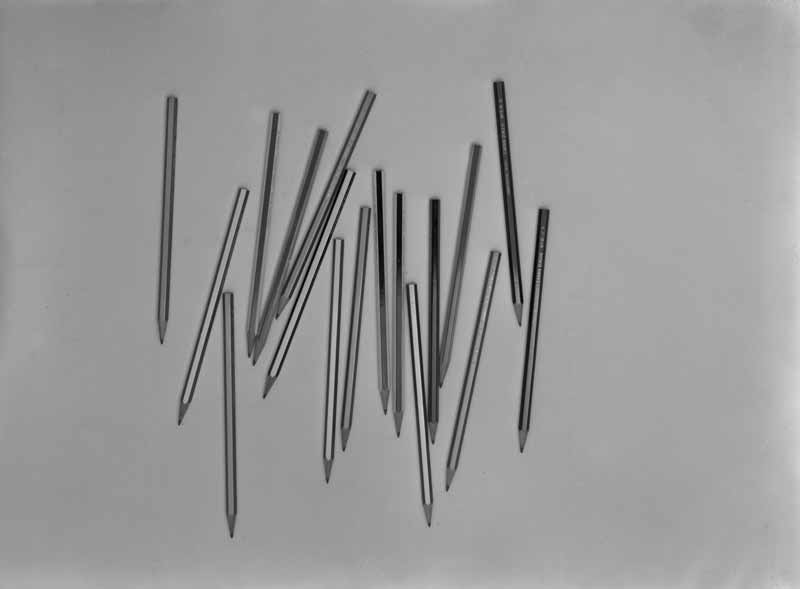
17 — Marirosa e Aldo Ballo, Matite, 1957
And: “The Rinascente fashion show has turned into an established local event in Milan. It is no longer merely an in-house event: it is a performance at the Teatro Manzoni theatre, with a high-spiriting opening night and an unmatched public success. An orchestra, a backdrop, and a stage that reaches out into the stalls, with an important and ever-changing star of the show: Elle Erre fashion” (“Cronache della Rinascente-Upim”, no. 4, 1954). But let’s not forget that the Rinascente collections also arrived on the catwalks of the Triennale event in 1960.
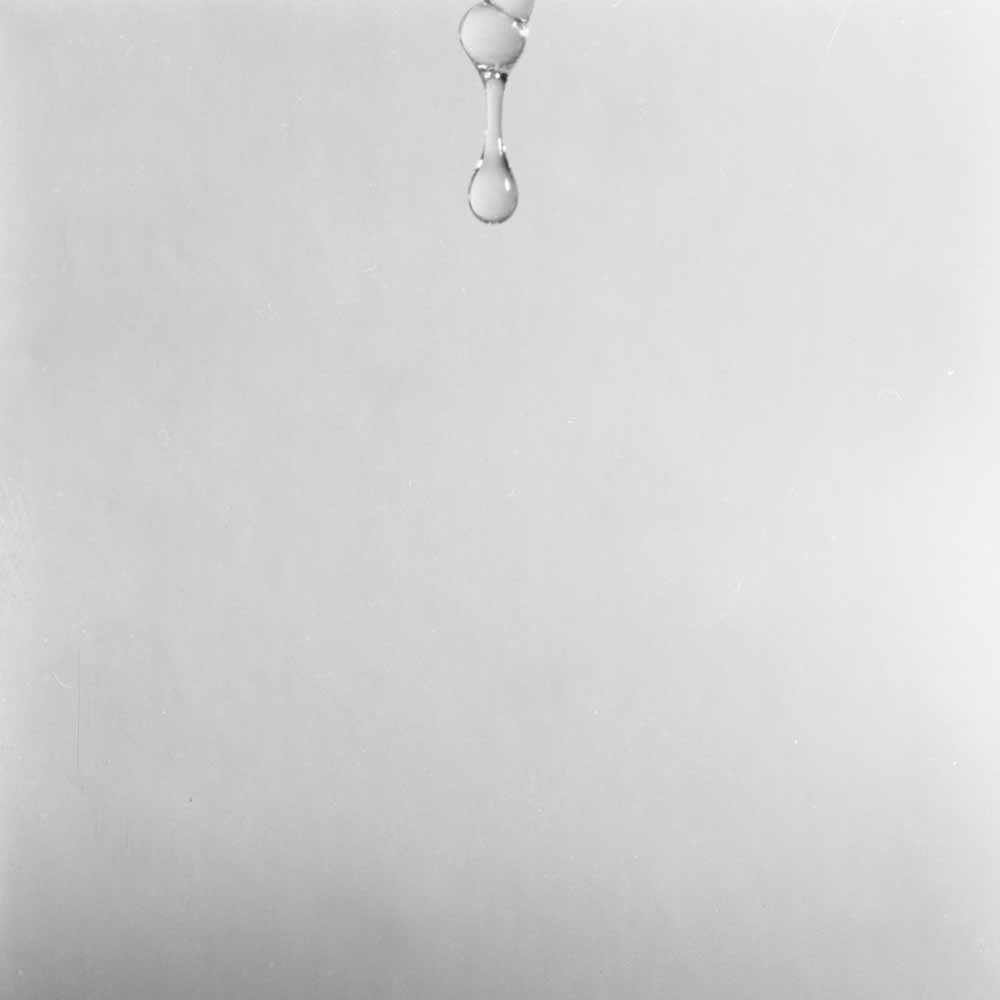
18 — Marirosa e Aldo Ballo, Goccia, 1961
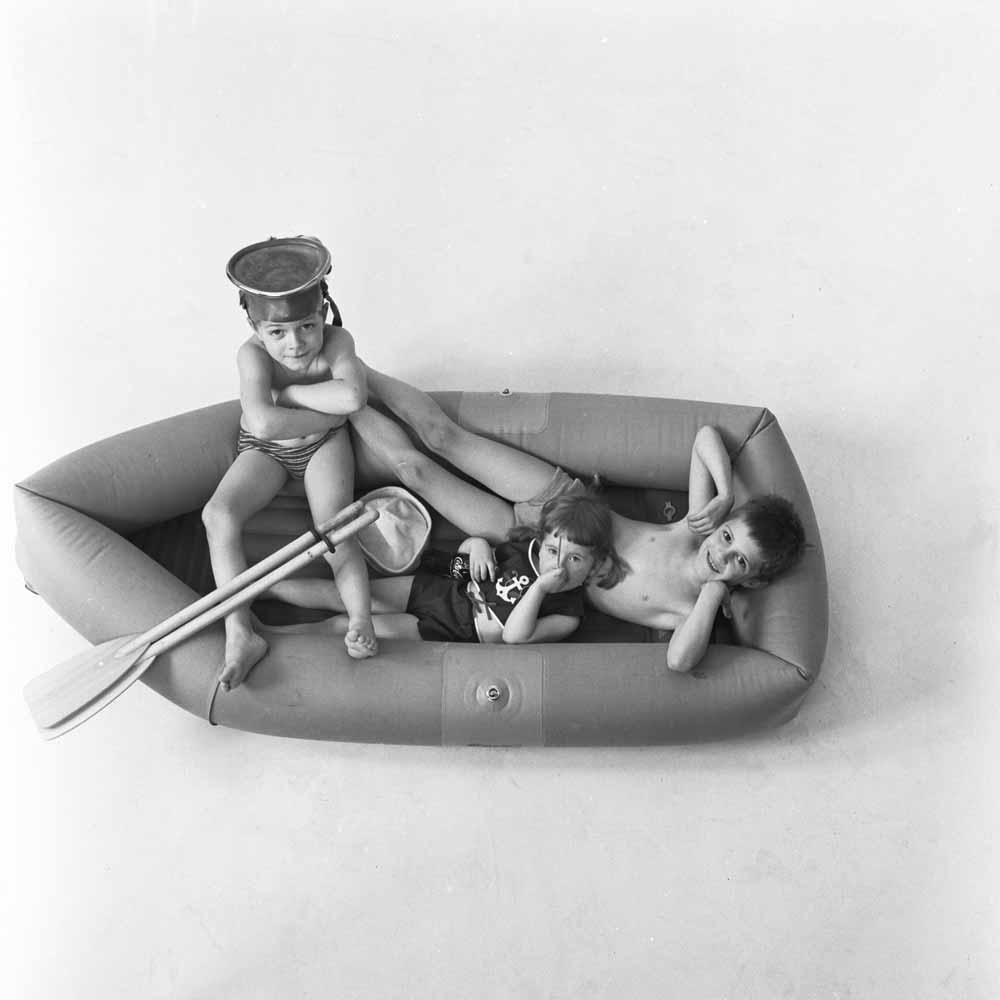
19 — Marirosa e Aldo Ballo, Bambini, 1964

20 — Marirosa e Aldo Ballo, Girandola, 1966

21 — Marirosa e Aldo Ballo, Meno fatica per favore, 1969
The role of the store assistants, as mentioned earlier, was vital - dressed by Biki in 1971 and instructed in how to wear make-up by Elena Melik: “For the woman who occasionally enters the department store to purchase items, the store assistant represents an example of neatness and style. Looking at her, a mother who is not a regular wearer of cosmetics feels the need to try and become more beautiful, to seek a more fashionable look. This is why the store assistant should never forget to make up her eyes and apply lipstick: she would strongly disappoint those who refer to her as a certain female role model” (“Cronache della Rinascente-Upim”, no. 46, 1968).
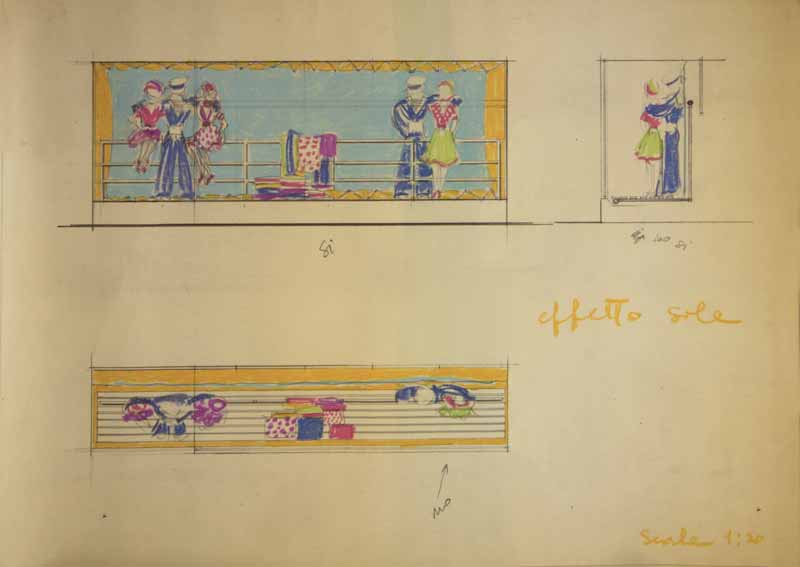
22 — Rosanna Monzini, Tema mare effetto sole, 1983
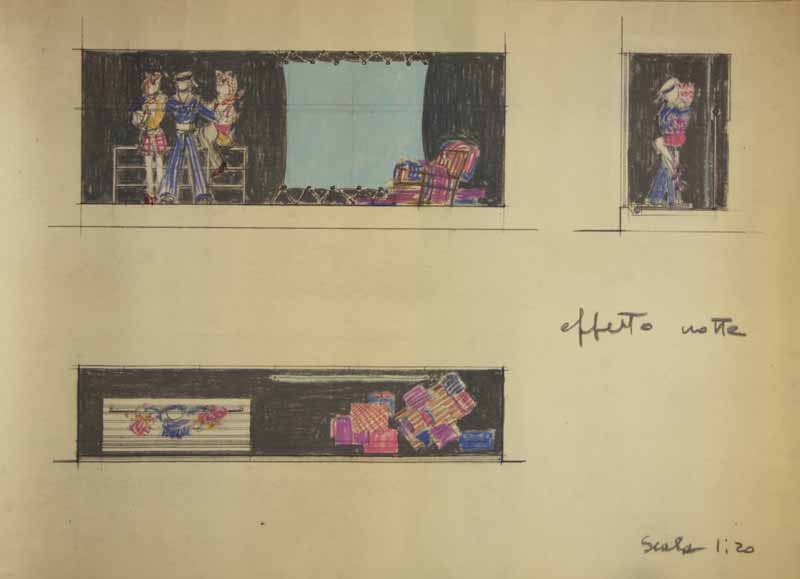
23 — Rosanna Monzini, Tema mare effetto notte, 1983

24 — Rosanna Monzini, Ready made Scuola 77, 1977

25 — Rosanna Monzini, Arredo per cameretta, 1985 ca.
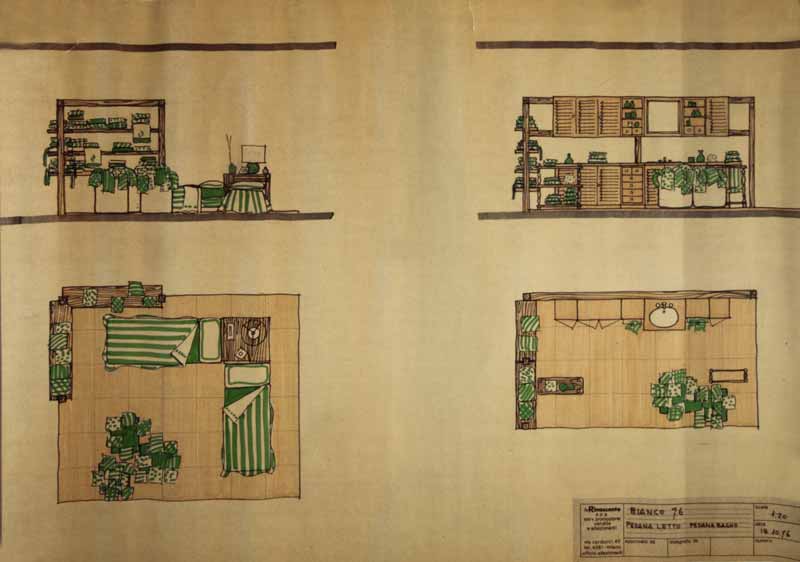
26 — Rosanna Monzini, Fiera del bianco, 1976
Rinascente fashion opened up the real possibility of emancipation with a new style of dressing - from unisex items to more unconventional outfits, and even the use of trousers for women, also in the workplace at a time when not all companies allowed their female employees to wear them. “As today’s men and women often swap clothes,” wrote Camilla Cederna “you can already find young girls rifling through the Rinascente menswear department who think nothing of throwing on a leather gilet with lambskin lining or a suede jacket” (“Cronache della Rinascente-Upim”, no. 57, 1970). It was Rinascente who legitimised the wearing of hotpants: “At New Year, actresses, singers, beautiful jet set women, they all showed off their bare legs to the world, from the edge of their long satin boots to the shiny hem of their shorts”.
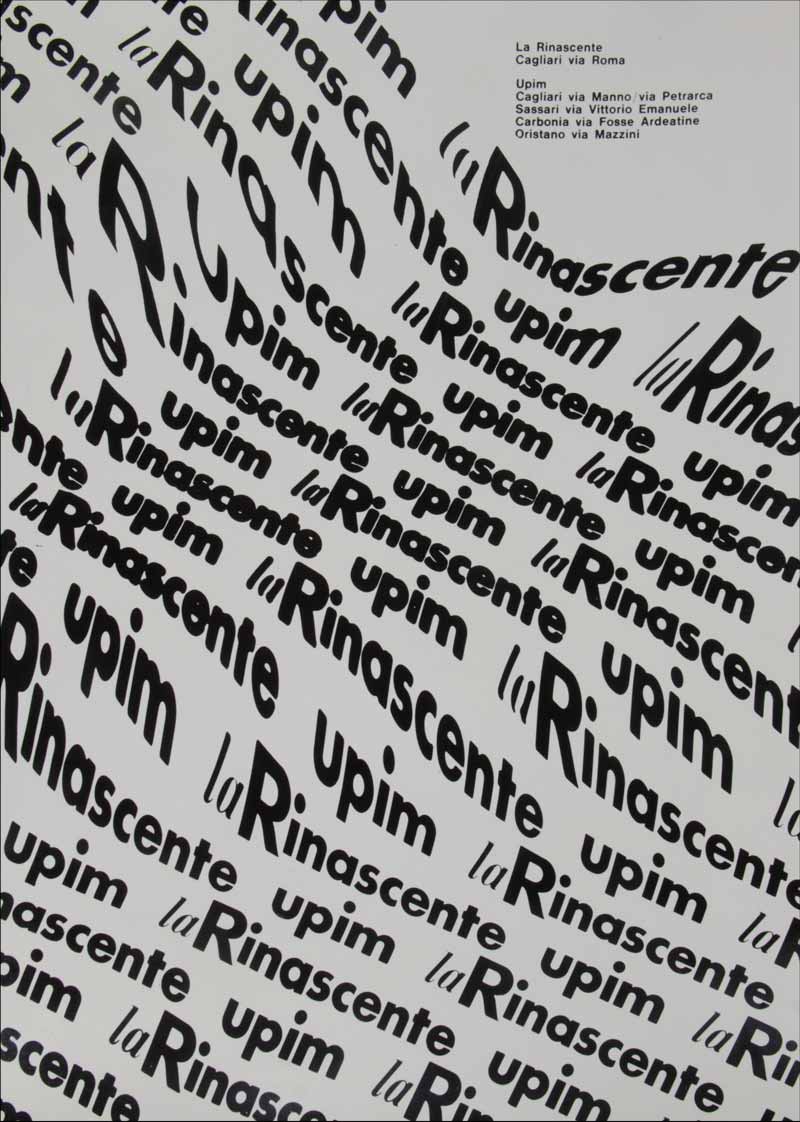
27 — Carla Gorgerino, Pubblicità, 1962 ca.
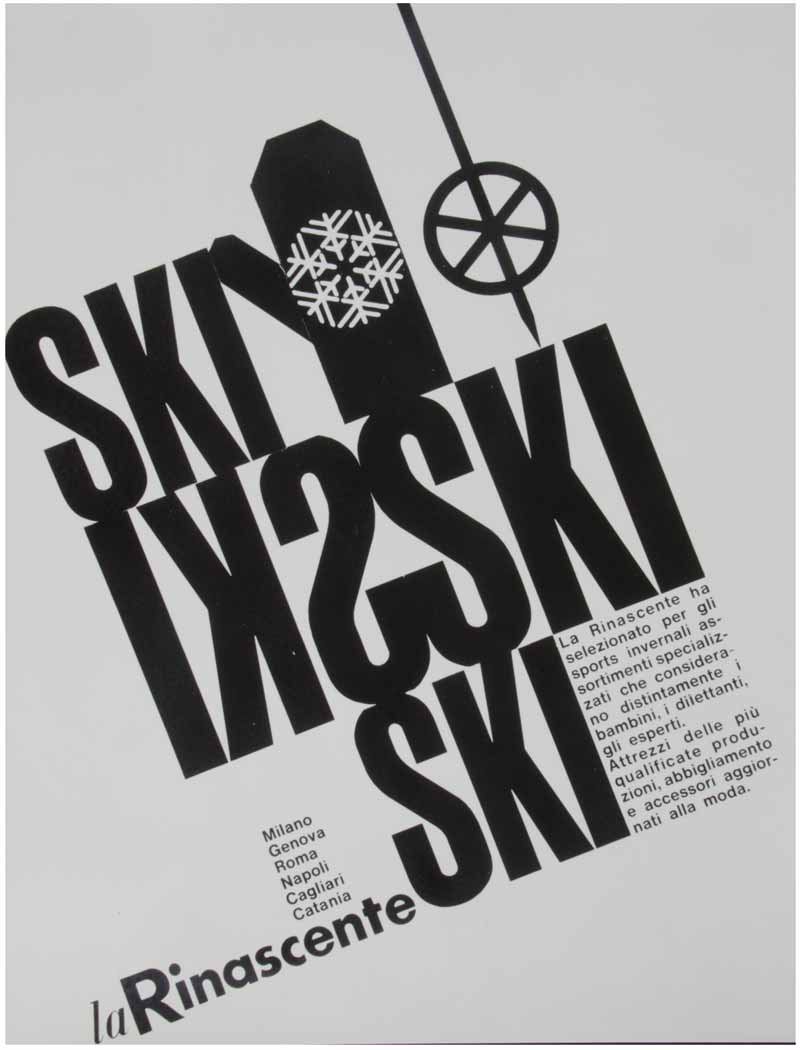
28 — Carla Gorgerino, Pubblicità, 1962 ca.
But what mattered most was selling to the masses, as Sonia Rykiel (dressmaker for Brigitte Bardot and avantgarde fashion designer) noted: “launching a new fashion with celebrities is a kids’ game. You can put anything you want on an actress or billionairess. But you can’t do that with a schoolgirl or young female worker. She’s the boss. And what you need for success in our field is in fact this base”. (“Cronache della Rinascente-Upim”, no. 59, 1971).
This concept was echoed by Rachele Enriquez: “while it’s true that fashion is created in the cocooned atmosphere of the designer’s atelier, it’s also true that the success of this new fashion and new styles is not decreed merely by Jacqueline Onassis, the Duchess of Windsor or Madame Pompidou, but also by the common public Mrs. Rossi, Bianchi and Brambilla, who accept en masse (maybe with a little hesitation and resistance at first) but wholeheartedly later, the fashion diktats from higher realms (“Cronache della Rinascente-Upim”, no. 54, 1970).
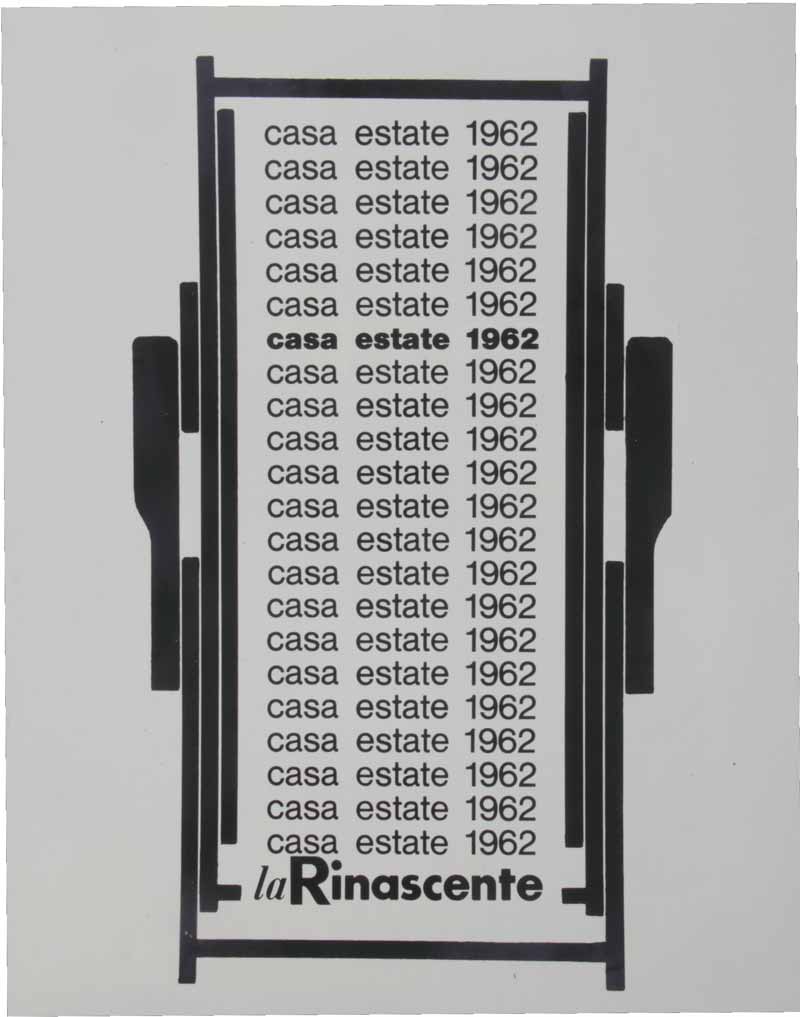
29 — Carla Gorgerino, Pubblicità, 1962 ca.
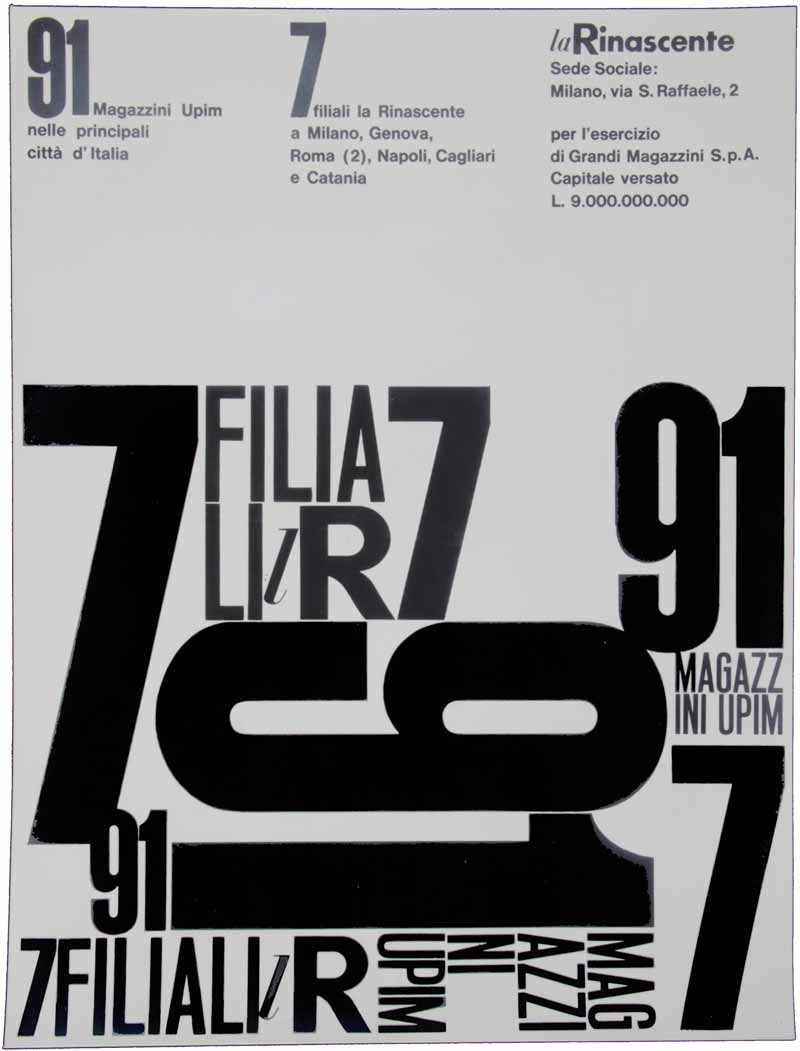
30 — Carla Gorgerino, Pubblicità, 1962 ca.
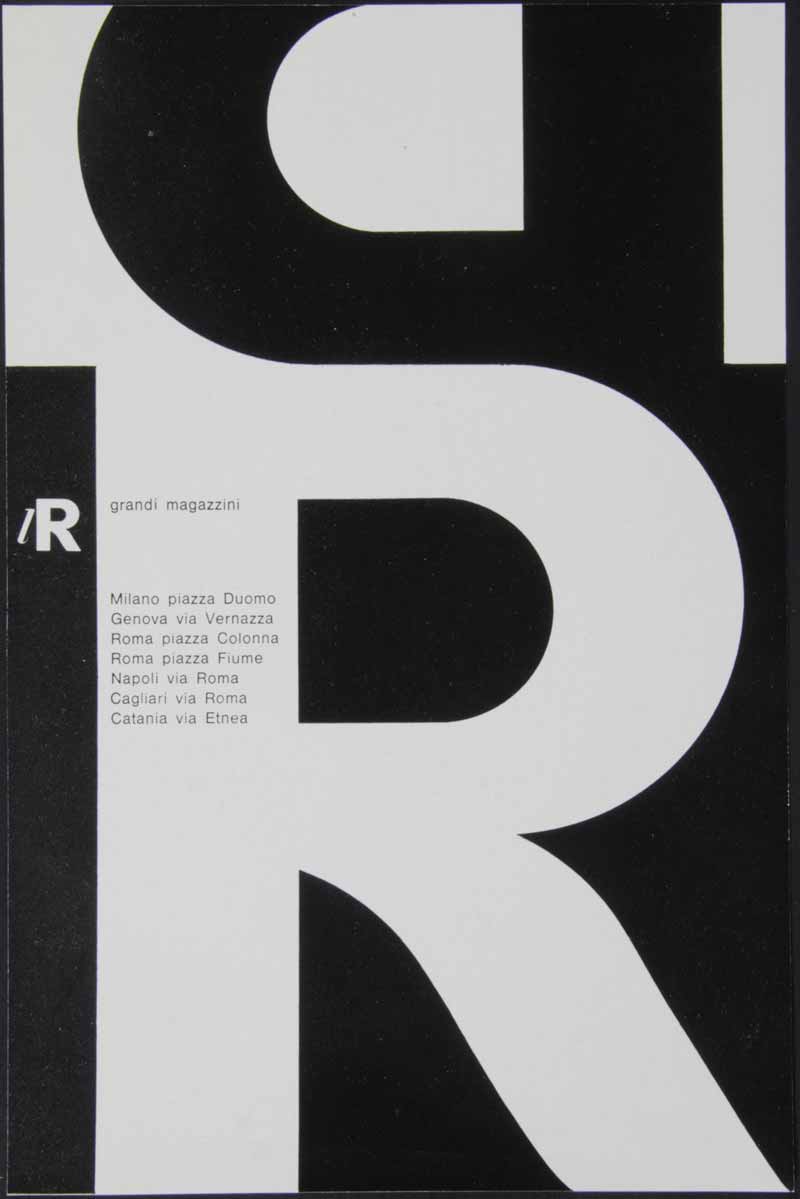
31 — Carla Gorgerino, Pubblicità, 1962 ca.
”Since the Fifties, Rinascente deeply changed Italian habits, becoming one of the main players in establishing the popularity of ready-to-wear fashion, explained Silvana Bernasconi: “Modern Italian women are moving quickly towards off-the-rack outfits that allow them to keep up with the latest in fashion at all times without spending a fortune”. (“Cronache della Rinascente-Upim”, no. 1, 1951).
The unprecedented intuition of Rinascente, both in the fashion industry and in the sectors of furnishing, home goods and design, led to the involvement of established companies in mass production at reasonable prices, beginning with the best-known designers in French fashion, namely Pierre Cardin and Courrèges. Rinascente contributed to discovering new Italian talents as well, such as the beautiful Miss Sympathy collection designed by Missoni in spring 1958, which was announced in invitations designed by Brunetta.

32 — Brunetta, Invito per Missoni in Rinascente, 1958
However, the real revolution came in the form of the young professionals who adopted key roles in the everyday running of the department store, always at the forefront of international retailing. Rinascente hosted many protagonists in the fields of fashion, graphic art, design, architecture, photography and advertising, including Rosita Missoni, Lora Lamm, Aoi Huber, Carla Gorgerino, Pegge Hopper, Ornella Noorda, Rosanna Monzini, Paola Lanzani, Piercarla Toscani Lanzani, Marirosa Toscani Ballo, Amneris Latis, and Adriana Botti Monti. This is the fascinating story of women that we want to reveal via documents, illustrations, and photographs (many never seen before) and which will uncover the important role that women played in the Made-in-Italy phenomenon.
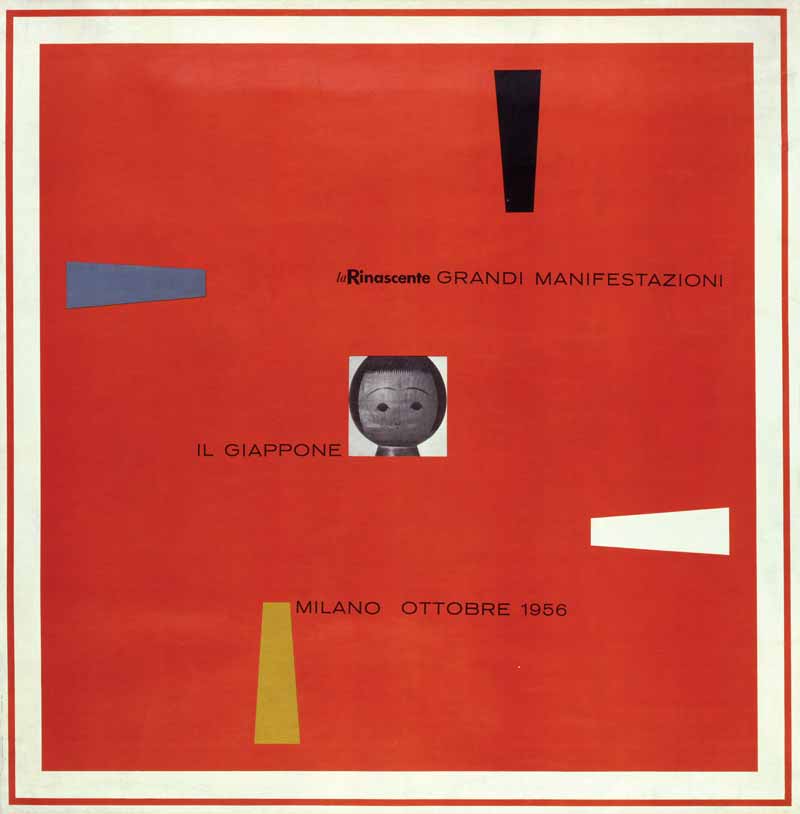
33 — Lora Lamm, Grandi manifestazioni: il Giappone, Invito ,1956

34 — Lora Lamm, Ritratto, 1968
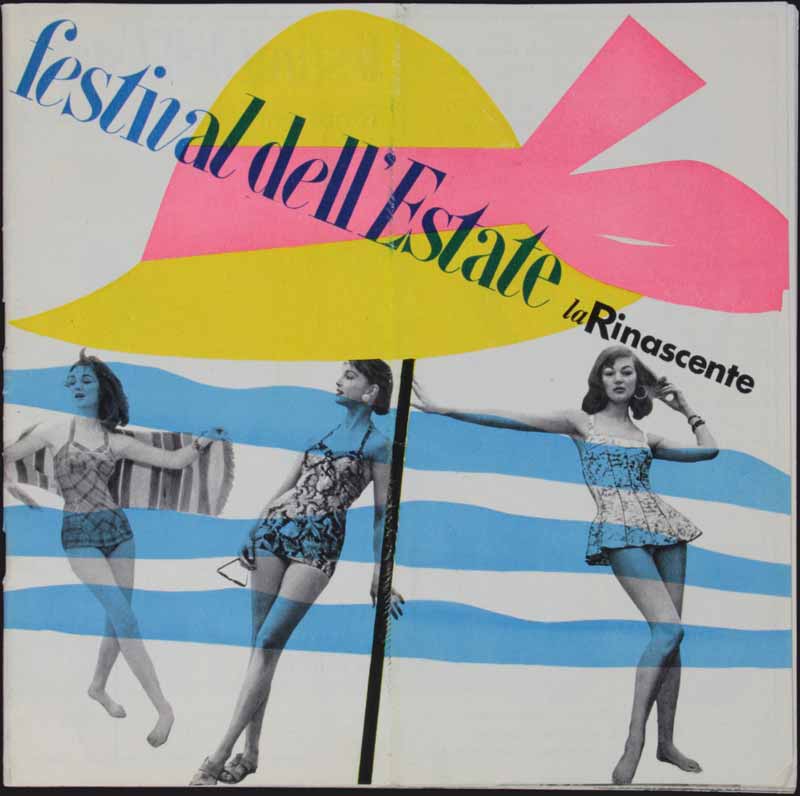
35 — Lora Lamm, Catalogo, 1956
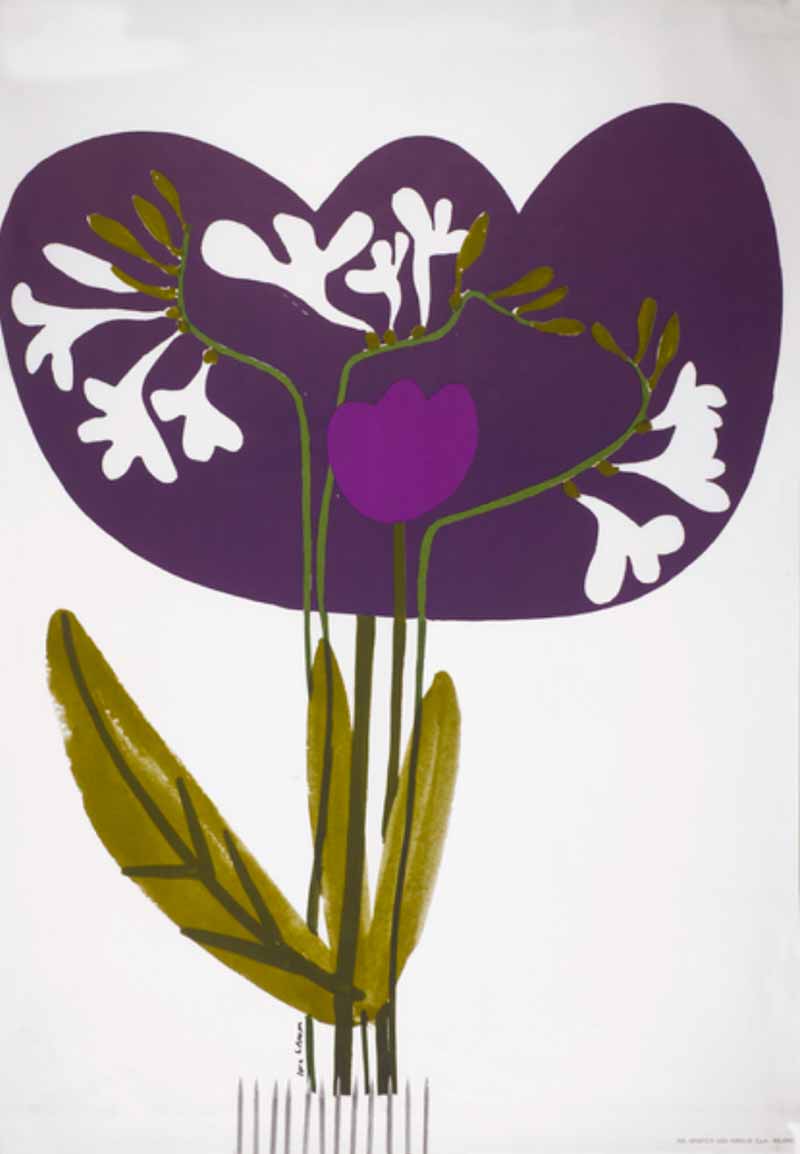
36 — Lora Lamm, Fiori nella casa, 1958
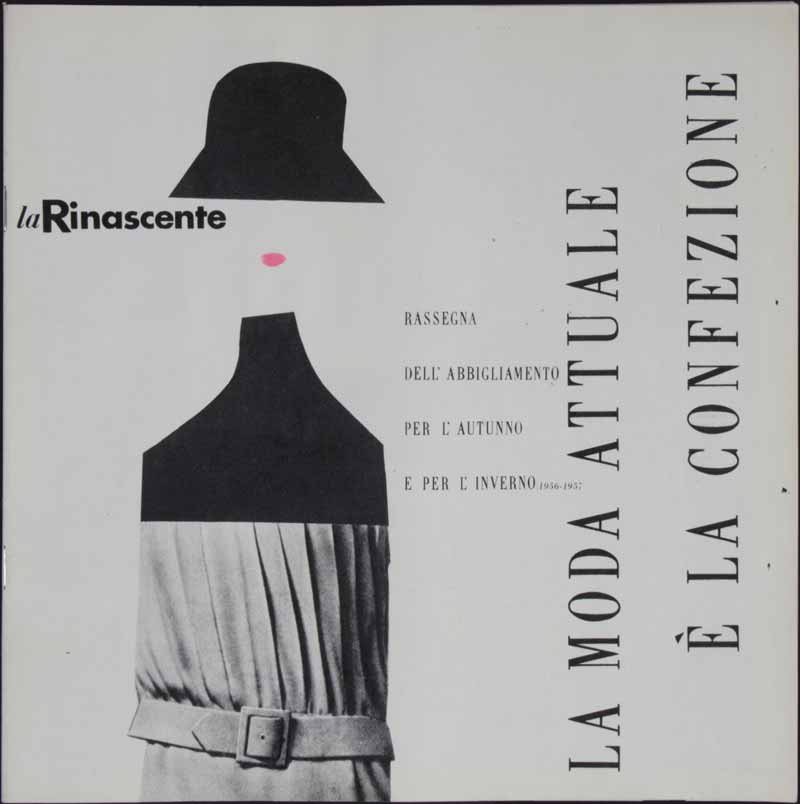
37 — Lora Lamm, Catalogo, 1956
Natalia Aspesi describes with her striking storytelling skill the extraordinary tale of Rinascente during the economic boom: “I remember those great years, when everyone started to go to Rinascente not only to buy but also to be amazed, discover things, even travel, with your imagination if nothing else. There wasn’t much real travelling going on in the Sixties, the world was still a mysterious treasure chest to dream and fantasise about. And exotic worlds began to arrive in Rinascente - the then-mysterious Far East, India, Japan, Mexico, Latin America, the iconic New York. In other words, the world: all accessible with its scents, goods, fabrics, antiques, traditional and new clothing - from saris to kimonos, bikinis to Che Guevara t-shirts. New and creative offerings arrived, along with inventive ideas, revelations, culture, enthusiasm and cutting-edge technology. The best of the best - top architects, designers, artists, graphic artists, photographers and fashion designers. A passionate and visionary breeze of modernisation - not only in terms of products but also of society, ideas and image, which accompanied and often preceded change in lifestyle, art and thinking”.
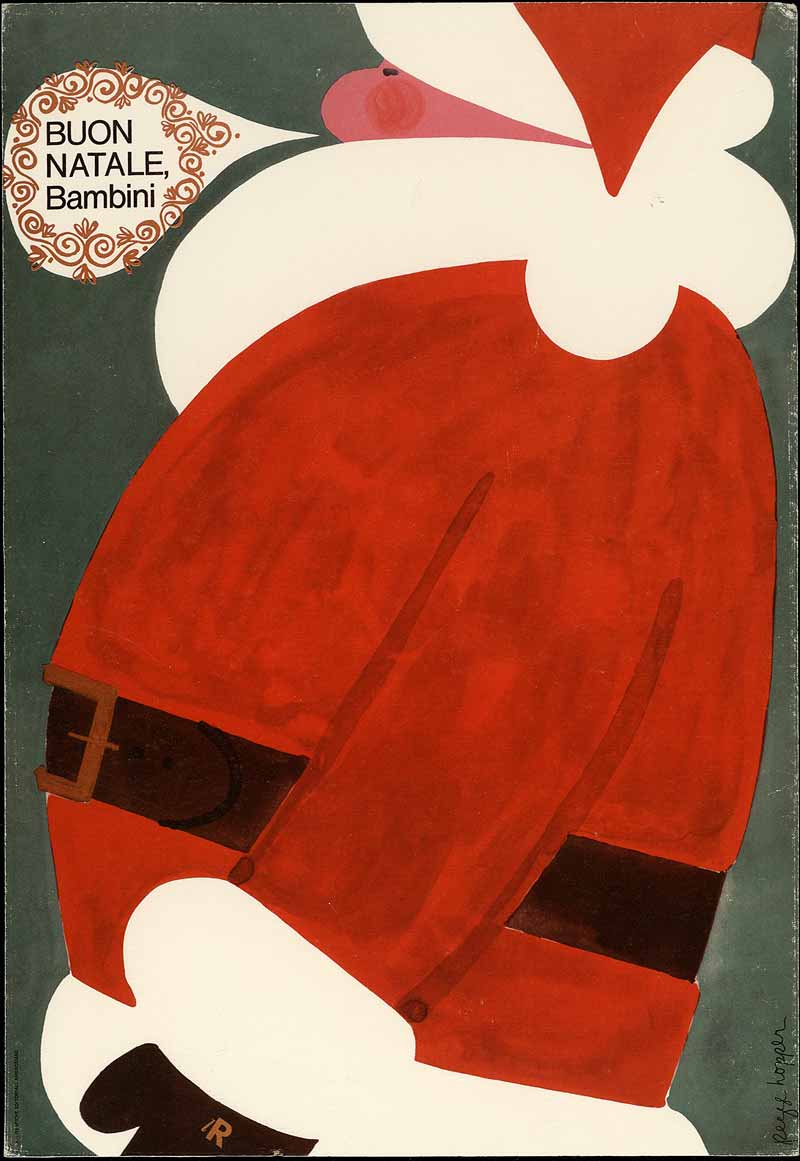
38 — Pegge Hopper, Buon Natale bambini, 1962 ca.

39 — Pegge Hopper, Piante e fiori intorno a noi, 1962 ca.

40 — Pegge Hopper, Al sole Invito, 1962 ca.

41 — Pegge Hopper, Mangiare in verde, 1962 ca.

42 — Pegge Hopper, Scuola, 1962 ca.
It was these very same Rinascente professionals who would invent, design, photograph, advertise and display “those great years” when the Made-in-Italy industry was born. And so here came
- the extremely colourful and patterned ready-to-wear fashion from Rosita Missoni;
- the exciting catalogues, posters, invitations and shopping bags designed by enthusiastic modern graphic artists such as Lora Lamm, Aoi Huber, Carla Gorgerino and Pegge Hopper;
- household items for the kitchen, office and leisure time by designer Ornella Noorda, with a Nordic influence that suddenly brought a European air to Italian homes;
- the new display areas on the floors, sales areas and above all, window displays, finally entrusted to architects like Rosanna Monzini, Paola and Piercarla Lanzani, who made the department store a masterclass in late twentieth century Italian architecture;
- the new language of modern photography introduced by Marirosa, sister to Oliviero Toscani and wife of Aldo Ballo;
- and last but not least, new advertising forms, which paved the way to contemporary marketing, aided by two fascinating young middle-class women from Milan - Amneris Latis and Adriana Botti Monti - who invented the roles of art director and PR.

43 — Ornella Noorda, Papavero, anni sessanta

44 — Ornella Noorda, Maccheroni di Napoli, anni sessanta
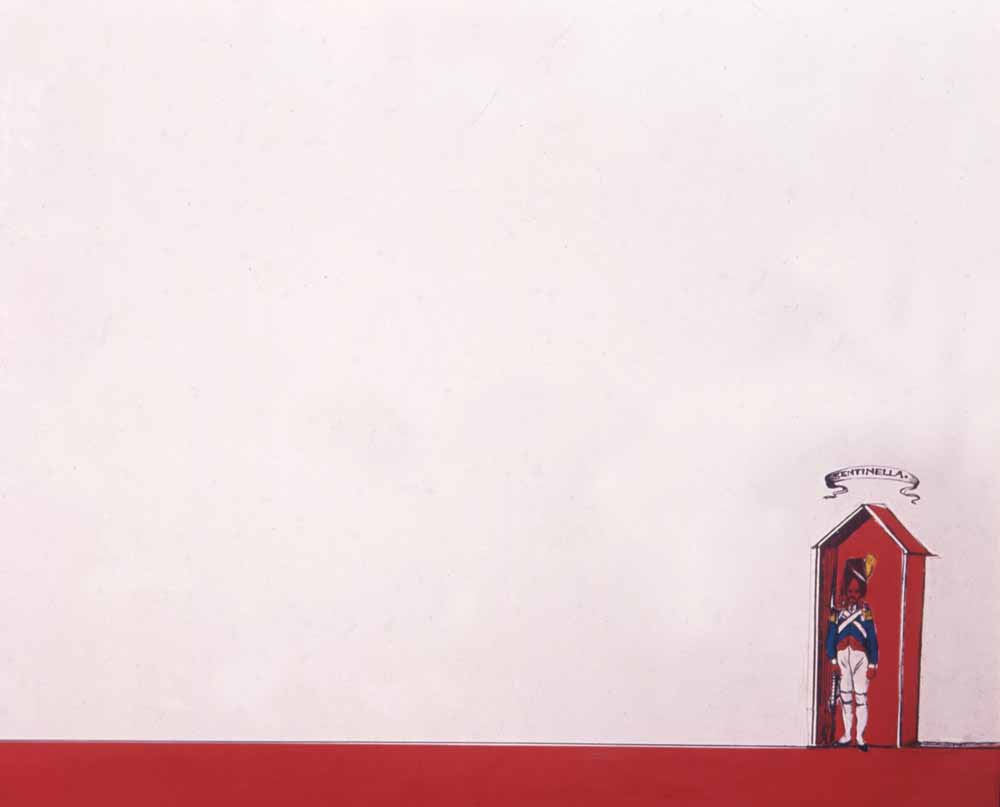
45 — Ornella Noorda, Grafica, anni sessanta
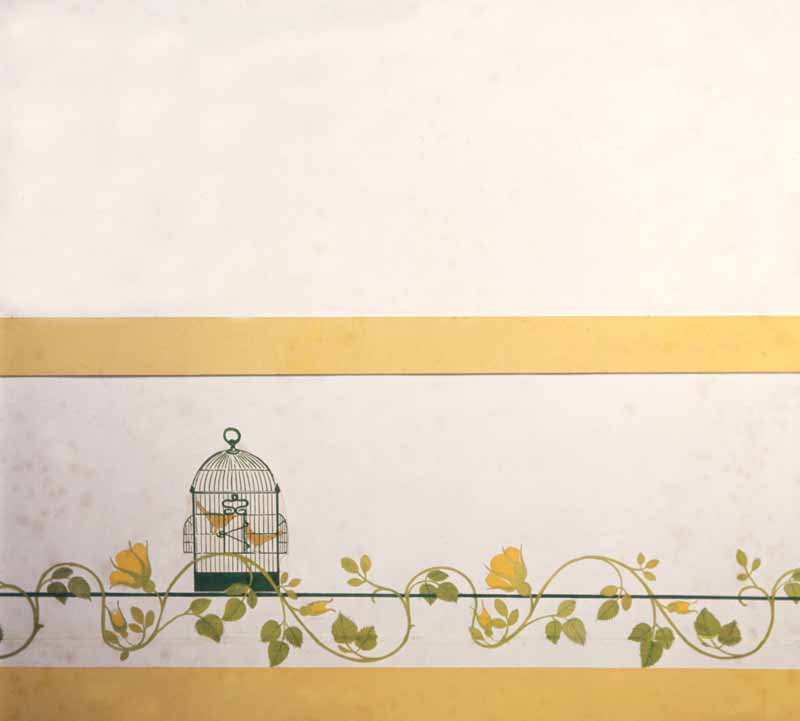
46 — Ornella Noorda, Grafica, anni sessanta
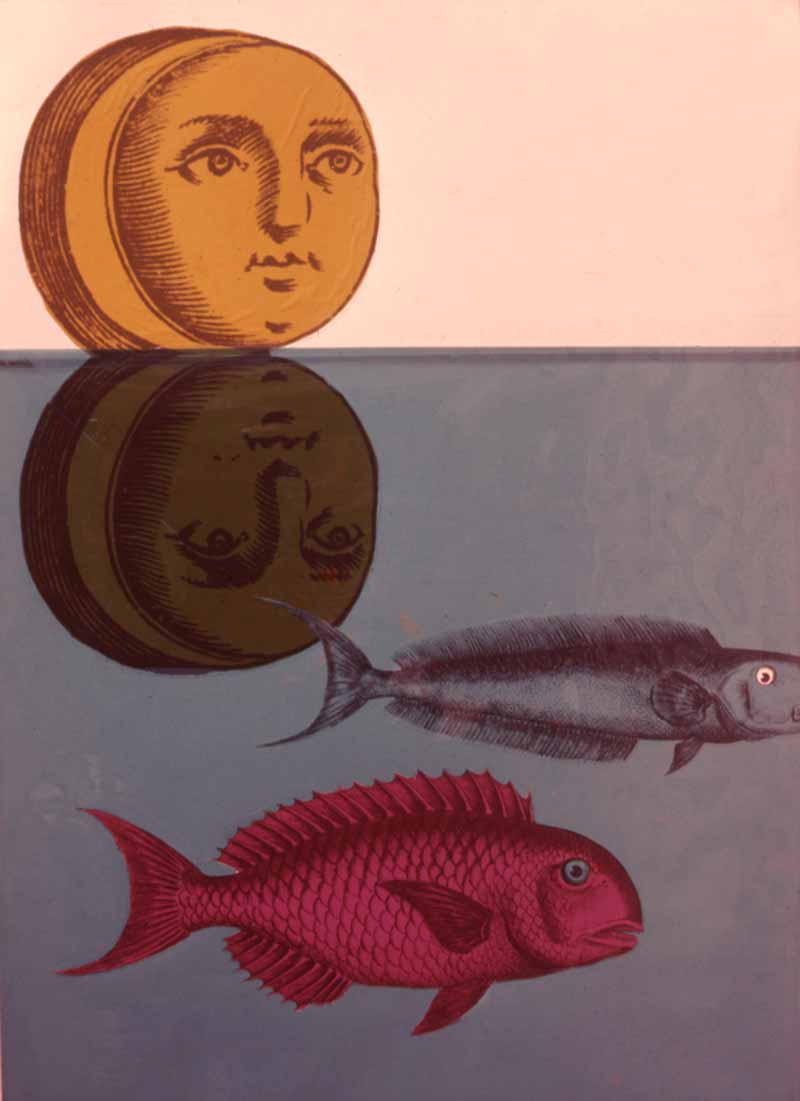
47 — Ornella Noorda, Canovaccio, 1967
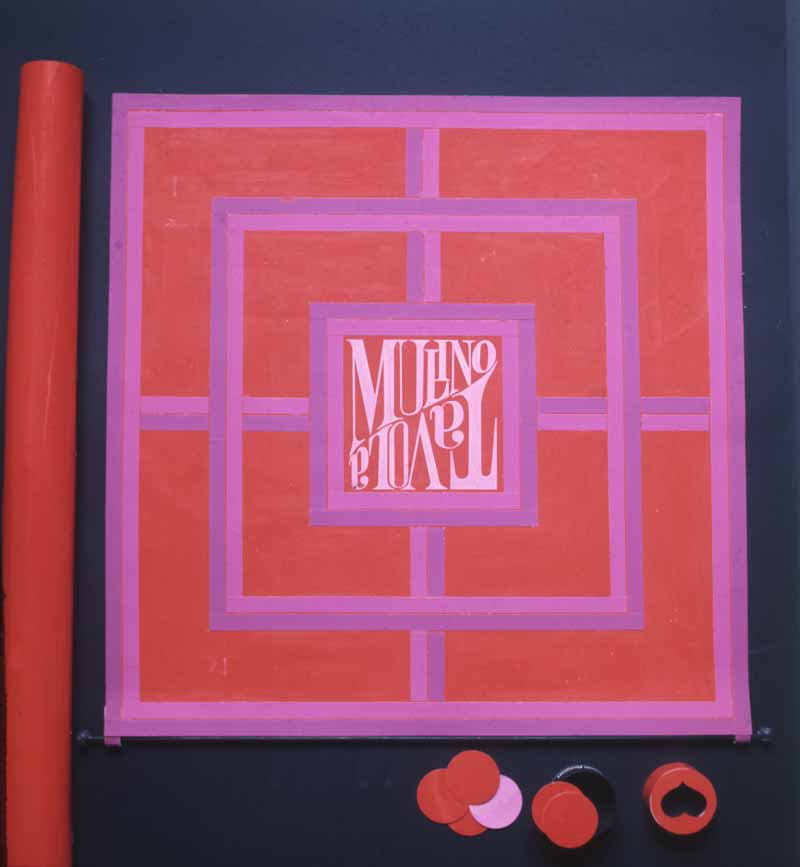
48 — Ornella Noorda, Tavola Mulino, 1967 ca.
As Marta Schiavi was to write, again in “Cronache della Rinascente-Upim” in 1968, the commercial success of the department store was due to the “Rinascente team, always ready to track the direction in which fashion was moving, in touch with graphic artists and designers worldwide, quick to grasp an intuition and transform it into tomorrow’s reality. And when, by chance, official fashion changed direction, the same team was ready to take charge, assimilate it, and set up a show in the blink of an eye, even at the last minute”.

49 — Paola Lanzani, Intervento cinetico per il Natale, 1970
The work was truly complex, taking into account not only the new trends but, above all, different mentalities and regional markets, different spending allowances, age brackets, and sizes (including extra-large). It should also be remembered that Rinascente and Upim were the first companies to award importance to labelling, including all information related to the fabrics used.

50 — Paola Lanzani, Allestimento

51 — Paola Lanzani, Invito all'inaugurazione de la Rinascente di via Roma di Cagliari, 1987
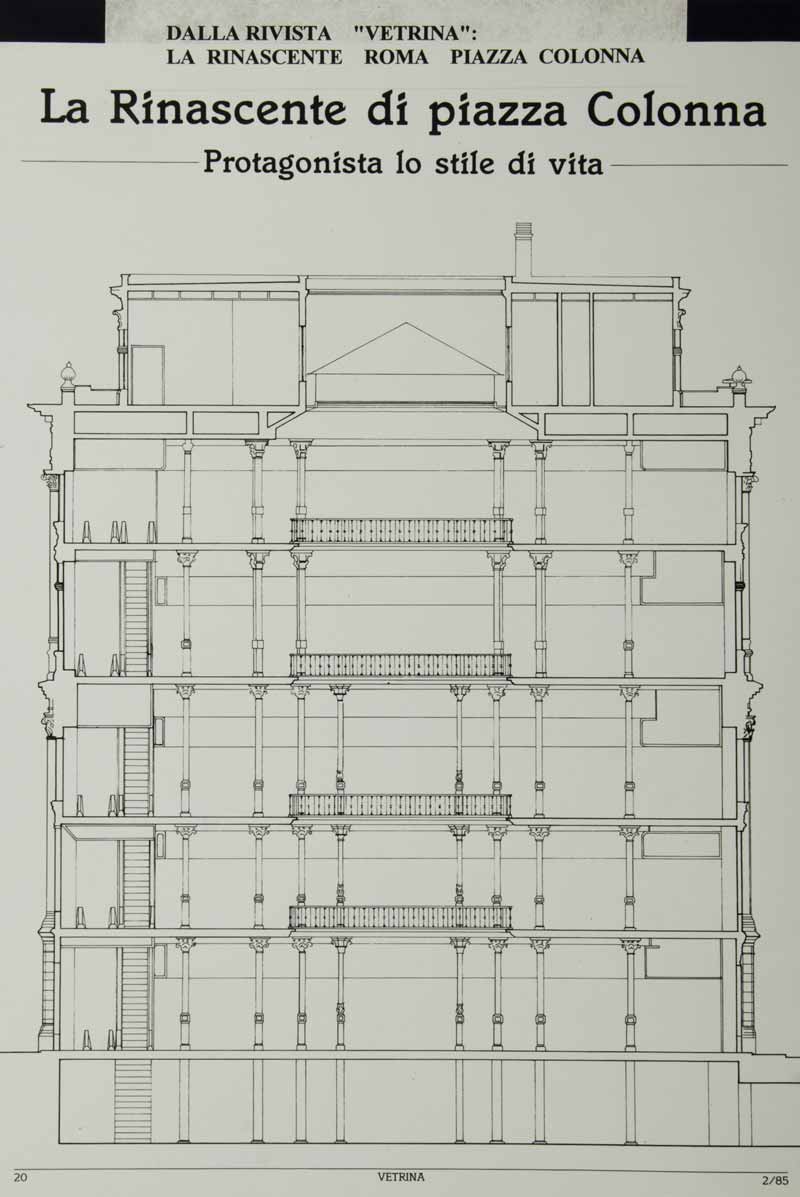
52 — Paola Lanzani, La Rinascente sede di Roma piazza Colonna, Presentazione, 1985
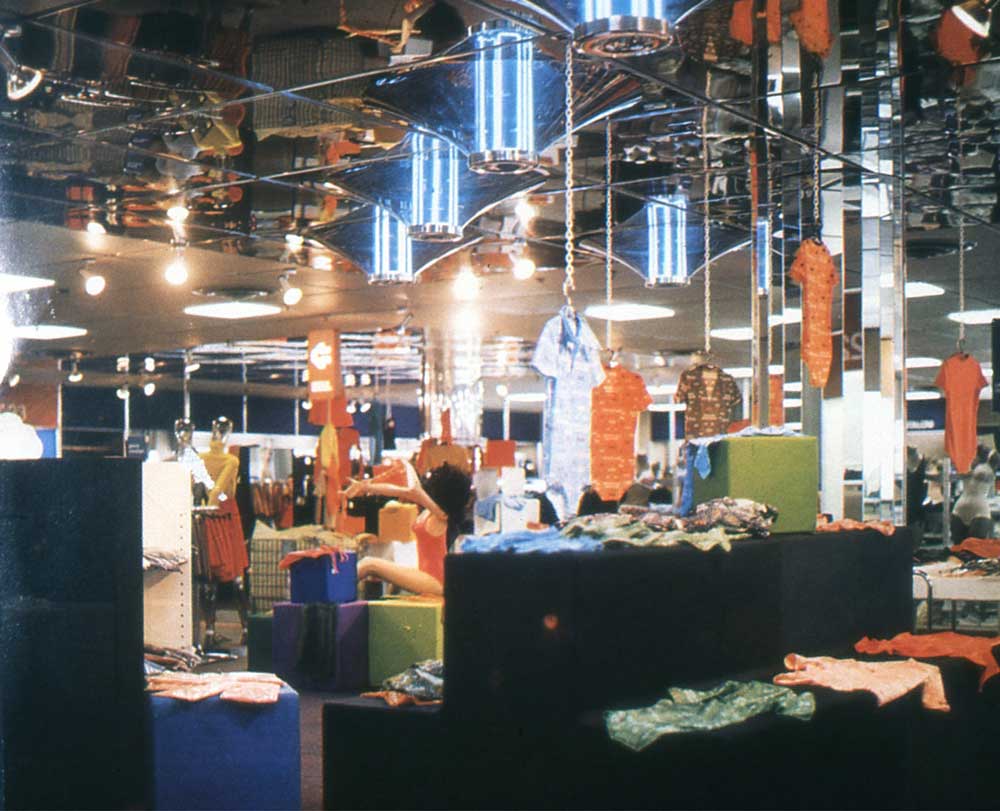
53 — Paola Lanzani, Allestimento
Following this all-female season, Rinascente, Milan and Italy would never be the same again: modernity entered the lives of Italians in women’s development and professional lives - from that moment on, they would be aware not only of their rights but also of the opportunities that Italian society, economy and culture could offer them, without needing to give up their femininity and elegance, or relinquishing Rinascente’s contemporary and practical style.
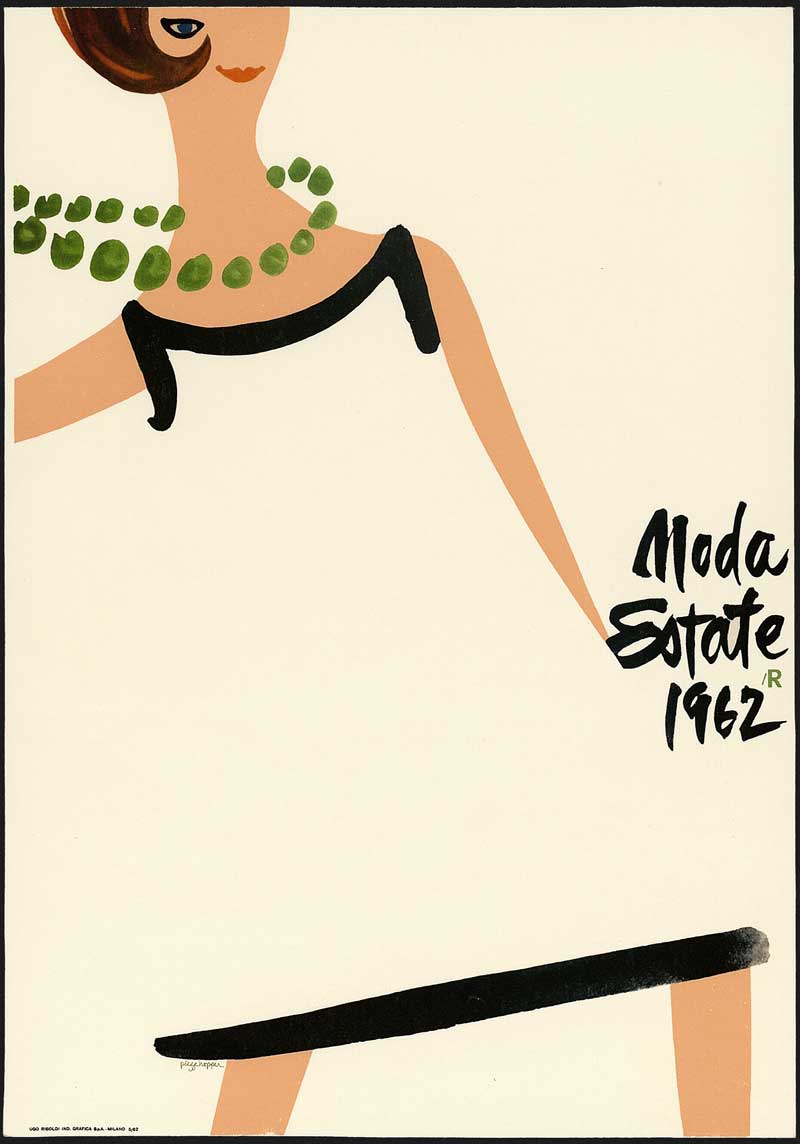
54 — Pegge Hopper, Moda estate, 1962